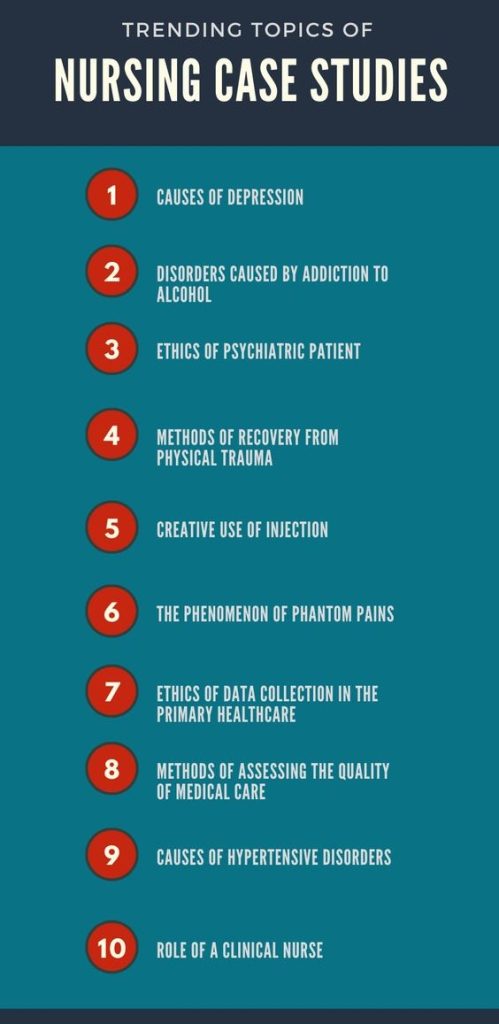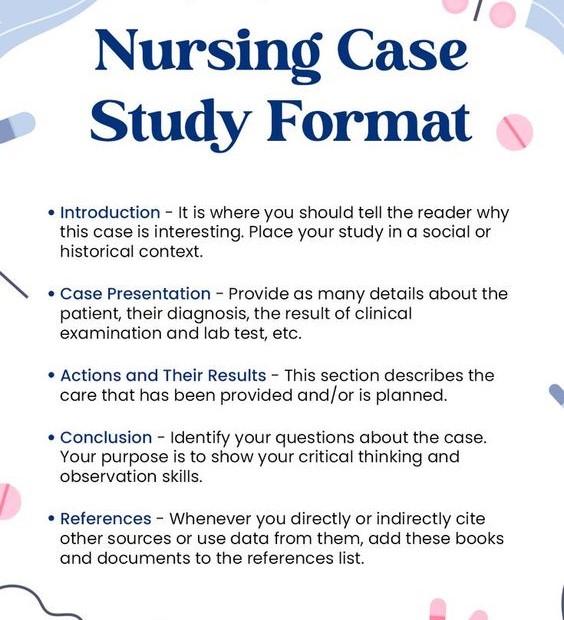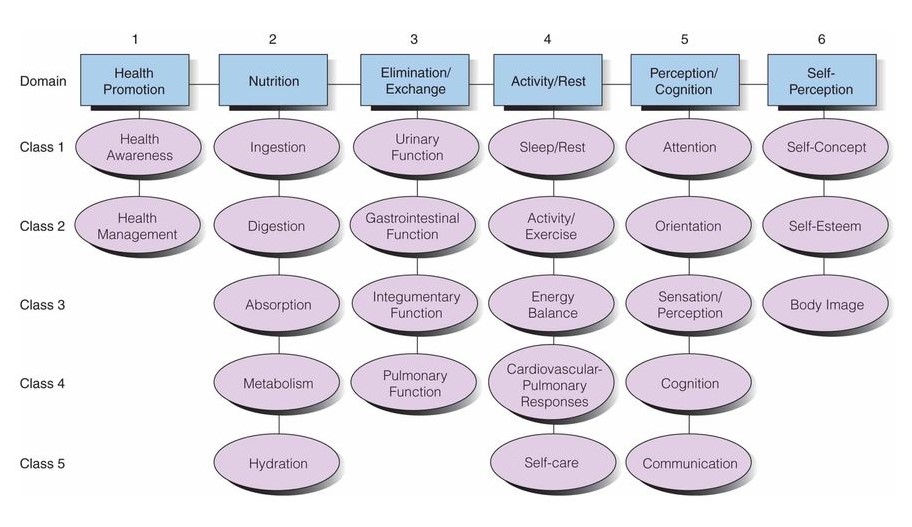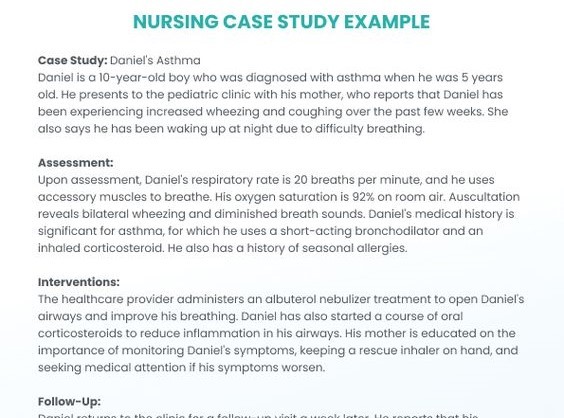
Table of Contents
Nursing case studies are a cornerstone of clinical education and practice. They provide a platform for students and professionals alike to delve into real-world scenarios, analyze patient situations, apply theoretical knowledge, and develop critical thinking skills. However, crafting a compelling and informative nursing case study requires careful attention to structure, content, and presentation.
This guide aims to equip you with the necessary tools to navigate the complexities of nursing case study writing.
Understanding the Purpose of Nursing Case Study Writing
Before diving into the specifics of nursing case study writing, it’s crucial to understand its underlying purpose. Nursing case studies are not simply narratives recounting patient experiences; they serve a multifaceted function:
- Educational Tool: Nursing case studies facilitate learning by presenting complex clinical scenarios that students can analyze, diagnose, and develop care plans for. They bridge the gap between theory and practice, allowing learners to apply their knowledge in a simulated environment.
- Research Instrument: Nursing case studies can be employed as research tools to explore specific phenomena, test hypotheses, and generate new insights. They allow researchers to investigate patient experiences, clinical interventions, and outcomes in depth.
- Professional Development: Nursing case studies provide valuable opportunities for practicing nurses to reflect on their practice, identify areas for improvement, and develop their clinical decision-making skills. They also serve as platforms for sharing best practices and innovative approaches to care.
Essential Components of a Nursing Case Study
A well-structured nursing case study comprises several key components that work in tandem to create a comprehensive and engaging narrative:
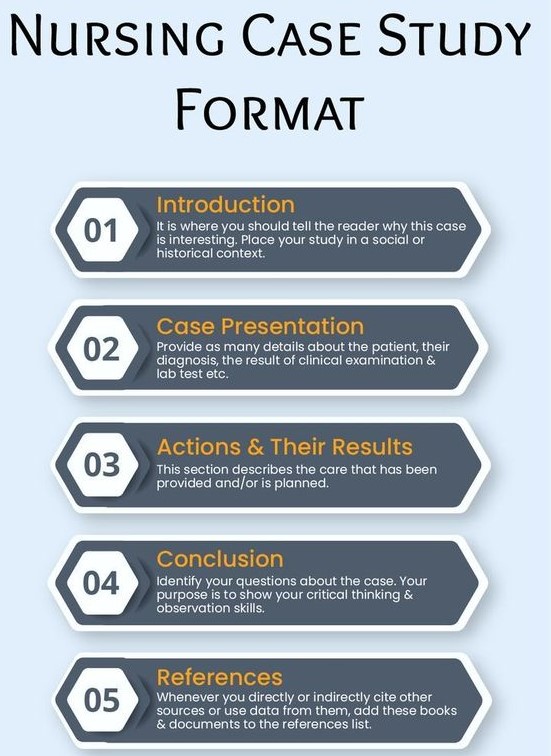
- Introduction: This section sets the stage for the case study by introducing the patient, their presenting problem, and the relevant background information. It should include the patient’s demographic data (age, gender, ethnicity), medical history, social history, and the presenting symptoms or concerns.
- Patient History and Assessment: This section delves into the patient’s history, both medical and social. It includes a detailed review of the patient’s past medical history, medications, allergies, family history, and any relevant social factors that may be impacting their health. The physical assessment should be documented systematically, highlighting key findings and observations.
- Subjective Data: This section focuses on the patient’s self-reported experiences, feelings, and perspectives. This includes their chief complaint, description of symptoms, pain levels, functional limitations, and any personal concerns they might have.
- Objective Data: This section presents objective measurements and findings collected during the assessment process. This may include vital signs, laboratory results, imaging studies, physical examination findings, and any other relevant objective data.
- Analysis and Interpretation: In this section, the writer analyzes the collected data, identifies relevant diagnoses, and develops a plan of care. This includes formulating a differential diagnosis, prioritizing the most likely diagnoses, and considering the potential impact of various medical and social factors on the patient’s condition.
- Nursing Interventions: This section outlines the specific nursing interventions that are planned and implemented to address the patient’s needs. It should include a detailed description of each intervention, the rationale behind it, and the expected outcomes.
- Evaluation and Outcomes: This section evaluates the effectiveness of the nursing interventions and documents the patient’s response to care. It should include a description of the patient’s progress, any changes in their condition, and the achievement of expected outcomes.
- Discussion and Reflection: This section provides an opportunity for the writer to reflect on the case study, discuss the implications of the findings, and consider alternative approaches to care. It also allows for a critical evaluation of the nurse’s role in providing patient-centered care.
- References: All sources cited within the case study should be listed in a comprehensive bibliography using a consistent citation style (e.g., APA, MLA).
Key Considerations for Nursing Case Study Writing
1. Patient Confidentiality and Privacy: When writing nursing case studies, it is crucial to protect the patient’s identity and maintain confidentiality. Always use pseudonyms, avoid including identifying details like names, addresses, or medical records numbers, and ensure that the case study does not disclose any sensitive information.
2. Ethical Considerations: It is essential to adhere to ethical principles in nursing case study writing. This includes respecting the patient’s autonomy, ensuring informed consent, and upholding the nurse’s professional code of conduct.
3. Clarity and Conciseness: The writing should be clear, concise, and easy to understand. Avoid jargon and technical language that may not be familiar to the reader. Use a consistent style and structure throughout the case study.
4. Critical Thinking and Analysis: Nursing case study writing requires more than simply summarizing patient information. It demands critical thinking, analysis, and the ability to draw connections between different pieces of information.
5. Focus on Nursing Care: While the case study may address the patient’s medical condition, the primary focus should remain on the nursing care provided. The writer should highlight the nurse’s role in assessing, planning, implementing, and evaluating patient care.
6. Use of Evidence-Based Practice: All interventions and decisions made in the case study should be supported by evidence-based practice guidelines and research findings.
7. Relevance to Nursing Practice: The case study should be relevant to current nursing practice and address issues that nurses commonly encounter in their work.
8. Use of Visual Aids: Visual aids, such as tables, charts, and diagrams, can enhance the presentation of data and facilitate understanding. They can be particularly helpful in illustrating complex concepts, demonstrating trends, and summarizing key findings.

9. Style and Format: The nursing case study should adhere to a consistent style and format. This includes proper grammar, punctuation, and citation style.
Strategies for Effective Nursing Case Study Writing
1. Choosing a Suitable Case: Select a case that is relevant to your learning objectives, area of interest, or current practice. The case should be complex enough to provide a meaningful learning experience, but not overwhelming in scope.
2. Gathering Data: Collect thorough and accurate data from various sources, including the patient’s medical records, physical examination findings, interviews with the patient and family members, and relevant literature.
3. Analyzing and Interpreting Data: Carefully analyze the collected data, identify key themes, and draw conclusions based on the evidence.
4. Developing a Clear Narrative: Organize the case study in a logical and coherent manner. Use clear headings and subheadings to guide the reader through the different sections.
5. Utilizing Case Study Templates: Many resources provide templates for nursing case study writing. These templates can provide a framework for organizing the case study and ensuring that all essential components are included.
6. Seeking Feedback: Get feedback from peers, instructors, or mentors on your case study drafts. This can help identify areas for improvement and ensure that the case study is clear, concise, and well-written.

7. Learning from Examples: Review existing nursing case studies published in journals, textbooks, or online repositories. Analyze their structure, content, and presentation to gain insights into effective case study writing.
8. Practicing and Refining: The more you practice nursing case study writing, the more confident and skilled you will become. Start with simpler cases and gradually move towards more complex ones.
Examples of Engaging Nursing Case Study Topics
Here are 6 topics for nursing case studies to inspire your writing.
- Managing a Patient with Chronic Pain: This case study could explore the complexities of managing a patient’s chronic pain, encompassing physical, psychological, and social aspects. It could be a great opportunity to demonstrate critical thinking skills and explore the use of various pain management strategies. Remember to consider the ethical considerations of opioid prescribing and the importance of patient education in nursing case study writing.
- Providing End-of-Life Care to a Terminally Ill Patient: This case study could delve into the sensitive and emotional aspects of end-of-life care. Nursing case study writing could focus on the nurse’s role in supporting the patient, their family, and ensuring the patient’s comfort and dignity. It could also explore the ethical considerations of providing palliative care and the importance of interdisciplinary collaboration.
- Caring for a Patient with a Post-Surgical Complication: This case study could examine the nurse’s role in identifying and managing a patient’s post-surgical complications. Nursing case study writing could highlight the nurse’s use of critical thinking, assessment skills, and communication with the medical team to ensure prompt and appropriate intervention. It could also emphasize the importance of patient education and discharge planning.
- Addressing a Patient’s Mental Health Concerns: This case study could explore the nurse’s role in identifying and addressing a patient’s mental health concerns. Nursing case study writing could focus on the nurse’s communication skills, therapeutic interventions, and understanding of mental health disorders. It could also explore the importance of collaborating with mental health professionals and advocating for the patient’s well-being.
- Promoting Patient Safety in a High-Risk Environment: This case study could examine the nurse’s role in promoting patient safety in a high-risk environment, such as the intensive care unit or emergency department. Nursing case study writing could emphasize the nurse’s commitment to following protocols, utilizing evidence-based practice, and collaborating with the medical team to minimize the risk of medical errors. It could also explore the importance of patient education and empowerment in promoting safety.
- Managing a Patient with a Complex Medical History: This case study could explore the challenges of managing a patient with a complex medical history, including multiple comorbidities and medication interactions. Nursing case study writing could highlight the nurse’s ability to synthesize information, prioritize care, and ensure safe and effective medication administration. It could also explore the importance of patient education and discharge planning.

Common Mistakes to Avoid in Nursing Case Study Writing
1. Lack of Focus: The case study should have a clear focus and purpose. Avoid trying to cover too many topics or presenting too much information.
2. Insufficient Detail: While conciseness is important, do not sacrifice crucial details. Provide enough information for the reader to understand the patient’s situation, the nursing interventions, and the outcomes.
3. Bias and Subjectivity: Avoid expressing personal opinions or biases in the case study. Present the information objectively and avoid making judgments about the patient or their care.
4. Lack of Supporting Evidence: All claims and interventions in the nursing case study should be supported by evidence-based practice guidelines, research findings, or relevant literature.
5. Poor Presentation and Formatting: Ensure that the case study is well-formatted, with clear headings, subheadings, and consistent style.
6. Grammatical Errors: Carefully proofread the case study for grammatical errors, spelling mistakes, and typos.
7. Plagiarism: Avoid plagiarizing from other sources. Properly cite all borrowed information and ensure that the case study is your original work.
8. Lack of Reflection: Take the time to reflect on the case study, discuss the implications of the findings, and consider alternative approaches to care.

Nursing case study writing is a valuable skill for both students and practicing nurses. By understanding the purpose, components, and considerations involved, you can create impactful case studies that contribute to learning, research, and professional development. Remember to prioritize patient confidentiality, ethical considerations, clarity, critical thinking, and the use of evidence-based practice. By following these guidelines and honing your writing skills, you can become a master of nursing case study writing.
Get the Best Nursing Case Study Writing Help
At PhD Nurse Writer, we provide professional nursing case study writing help for undergraduate, Degree, Master’s and Doctoral courses. Our service covers topic suggestion, paper writing, proof reading and editing, plagiarism check and removal. Besides case studies, we can also help you with nursing research papers, essays, dissertations and thesis.


